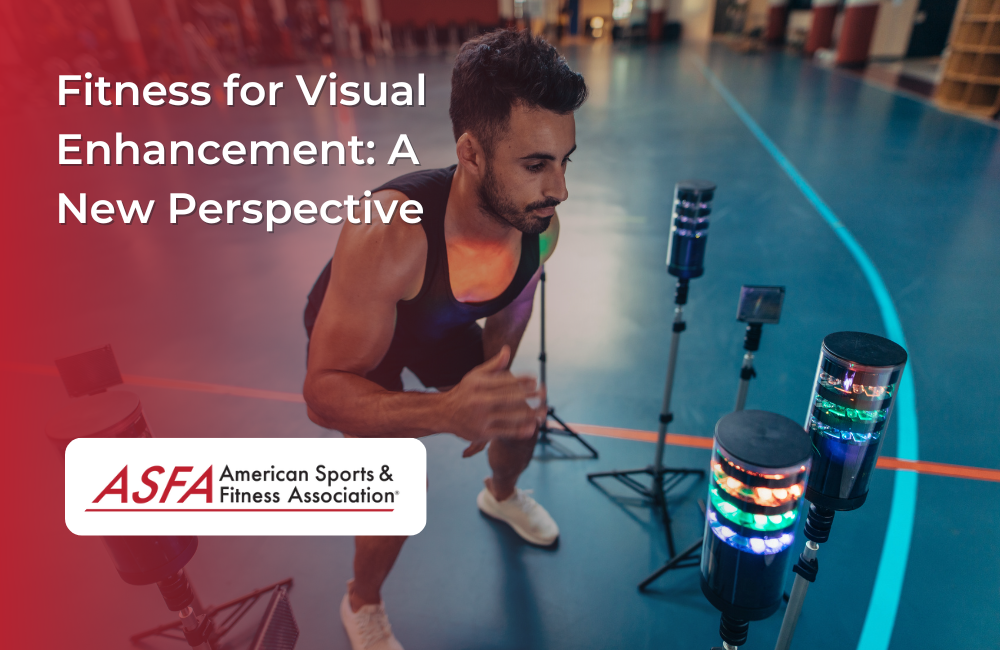Exercise is an integral part of a healthy lifestyle. Not only does it improve your overall quality of life and help maintain a healthy weight, but it also plays a crucial role in brain function and cognitive health. According to a study, individuals who regularly engage in physical activity are significantly less likely to develop cognitive impairments later in life. The research found that aerobic exercises, such as jogging, swimming, and cycling, help improve memory and keep the mind sharp even into old age.
This article will delve into how exercise contributes to better brain function, enhanced vision, and how specific practices like yoga and Pilates can improve both mental clarity and physical strength.
Exercise for a Healthier Brain
Exercise is one of the most powerful tools for enhancing brain function. When you engage in physical activity, blood flow to the brain increases, delivering essential oxygen and nutrients that support optimal brain health. This enhanced circulation stimulates the production of new neurons in areas of the brain responsible for learning and memory, such as the hippocampus. As a result, exercise promotes neurogenesis, which can enhance cognitive function and protect against age-related memory decline.
Additionally, exercise has been shown to improve focus, concentration, and problem-solving abilities. Regular physical activity allows the brain to process information more efficiently, meaning tasks that once seemed challenging become easier to manage over time. This is particularly important as we age, as maintaining cognitive sharpness is key to living a fulfilling and independent life.
Endorphins, the “feel-good” chemicals produced during exercise, also play a significant role in brain health. These natural mood elevators help reduce stress, anxiety, and depression. Unlike medications that may come with side effects such as weight gain or fatigue, regular exercise helps regulate emotions without the risk of harmful aftereffects. Exercise also promotes better sleep, a critical factor for maintaining brain health. Quality sleep allows the brain to repair itself, consolidate memories, and process emotions. A lack of sleep, on the other hand, can impair cognitive function and make the brain more susceptible to damage from unhealthy behaviors, such as substance use or poor dietary choices.
Exercise is even more effective when integrated into a holistic approach to mental well-being. For individuals suffering from depression or anxiety, physical activity is often prescribed as a complementary treatment. Studies show that regular exercise can alleviate symptoms of these mental health conditions by boosting mood, increasing energy levels, and improving sleep patterns. The benefits of exercise are multifaceted, making it a cornerstone of both physical and mental health.
Exercise and Eye Exercises for Improved Vision
While the benefits of exercise for brain health are well-known, its impact on vision is often overlooked. Regular physical activity can significantly improve eye health by promoting better circulation and reducing the risk of eye-related issues. The same increased blood flow that benefits the brain also delivers oxygen and nutrients to the eyes, keeping them healthy and functioning optimally.
Aerobic exercises, such as jogging or swimming, help the brain form new neural connections in the visual cortex, the area responsible for processing visual information. This increased neural activity enhances our ability to focus and improves overall visual clarity. Studies have shown that people who exercise regularly are less likely to develop conditions such as age-related macular degeneration and glaucoma, both of which can impair vision over time.
Pencil push-ups are a technique for improving eye convergence. Start by holding a pencil at arm's length and slowly move it closer to your nose while keeping your eyes focused on it. This exercise helps strengthen the eye muscles and improve their ability to work together.
Additionally, exercise reduces inflammation in the body, including in the eyes, which is critical for preventing vision-related problems. Chronic inflammation is associated with a variety of health issues, including those that affect the eyes, such as cataracts or dry eye syndrome. By reducing inflammation, exercise not only improves vision but also protects against long-term damage to the eyes. Eye exercises like 'near and far focus' can further enhance visual clarity by training the eyes to switch focus between close and distant objects.
Physical activity also helps manage conditions like diabetes, which, if uncontrolled, can lead to diabetic retinopathy—a serious condition that can result in blindness. Regular exercise helps regulate blood sugar levels and reduces the risk of developing Type 2 diabetes, further safeguarding eye health. An eye-tracking exercise, where individuals trace an imaginary figure eight and then switch directions, can also enhance eye movement skills.
Understanding Vision Therapy
Vision therapy is a specialized form of physical therapy for the eyes, designed to improve visual functioning and alleviate various vision problems. This customized program involves a series of eye exercises, visual training, and the use of specialized lenses, prisms, and other therapeutic tools. Vision therapy aims to enhance eye coordination, eye tracking, focusing, and depth perception, among other visual skills.
For individuals experiencing eye strain, headaches, blurred vision, or double vision, vision therapy can be particularly beneficial. It is often recommended by eye doctors for both children and adults who struggle with these issues. Through targeted eye exercises and visual training, vision therapy helps retrain the visual system, leading to improved visual performance and reduced discomfort.
Fitness Benefits of Yoga and Pilates
Yoga and Pilates are exceptional forms of exercise that offer a unique combination of mental, physical, and emotional benefits. Both practices focus on controlled movements, breathing, and mindfulness, making them ideal for enhancing mental clarity while also strengthening the body.
Yoga is known for its ability to stretch and relax the muscles while promoting mental balance and reducing stress. By practicing yoga regularly, individuals can improve their flexibility, balance, and strength while simultaneously calming the mind. The deep breathing techniques associated with yoga increase oxygen flow to the brain, which improves focus, concentration, and overall cognitive function. Yoga has also been shown to reduce stress hormones like cortisol, which can negatively impact brain health if left unchecked.
Additionally, yoga improves sleep quality, which is crucial for cognitive performance. Studies have shown that people who practice yoga report better sleep patterns and experience less anxiety throughout the day. The combination of physical and mental benefits makes yoga an excellent option for anyone looking to enhance brain health while reducing stress and improving physical fitness.
Pilates, on the other hand, focuses more on building core strength, improving posture, and increasing flexibility. Pilates exercises involve controlled movements that engage the muscles of the abdomen, back, and hips, which leads to improved overall body alignment. This is particularly important for individuals who spend long hours sitting at a desk or in front of a computer, as poor posture can lead to musculoskeletal issues and negatively impact both physical and mental health.
Pilates not only strengthens the body but also helps individuals become more aware of their movements and posture, leading to better physical alignment and reduced strain on muscles and joints. This heightened awareness extends to mental clarity, as the practice requires focus and precision in executing each movement. The mind-body connection that Pilates fosters can improve cognitive function, reduce stress, and enhance overall well-being.
Conclusion
In conclusion, exercise is far more than just a tool for physical fitness—it is essential for maintaining and improving brain function, mental clarity, and vision health. Regular physical activity increases blood flow to the brain, promotes the growth of new neurons, and helps regulate mood by releasing endorphins. These benefits not only enhance cognitive performance but also protect against age-related mental decline.
For those looking to improve both mental and physical health, practices like yoga and Pilates provide the perfect balance of mind-body engagement. These exercises promote mental clarity, reduce stress, and improve physical strength and flexibility, making them ideal choices for holistic well-being.
By incorporating regular exercise into your routine, you can safeguard your brain and vision health while enhancing your overall quality of life. Whether through aerobic activities like jogging or mind-body practices like yoga, staying active is the key to unlocking a healthier, happier future.





